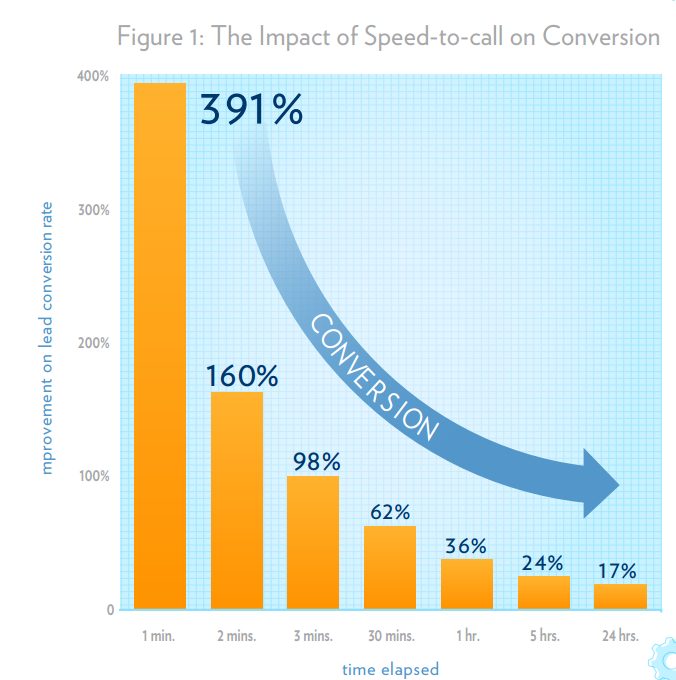No Results Found
The page you requested could not be found. Try refining your search, or use the navigation above to locate the post.

For many businesses ready for growth, it’s fairly typical to consider outsourcing sales and marketing and various other functions including: human resources, accounting and IT. And historically, when it comes to growing sales, most companies initially consider building a team of dedicated sales and marketing professionals. The conventional process was to hire lead gen reps and a senior sales professional, and then assign an existing employee with multiple marketing and demand generation functions.
But over the past several years, the requirements of buyers have significantly changed. First, they expect to be able to educate themselves digitally online, and they expect continuing education. Then, they expect to engage with both thought leaders and sales professionals as they make their purchase decision.
So, sales success in this new buyer-driven market now requires a team of sales and marketing professionals with a variety of skill sets, all focused on making it easy for the buyer to buy. These skill sets can be time consuming and difficult to assemble effectively and quickly. As a result, many companies are discovering the old model of hiring and building a sales and marketing team on their own is just not enough to generate what they need to produce sustained sales growth and success.
Consequentially, businesses are increasingly discovering that outsourcing their sales and marketing team is an attractive and smart business decision for growth and many other reasons as well. The different justifications for outsourcing all result in reducing costs, increasing results and lowering risks.
If you would like to learn more about outsourcing sales and marketing, contact us for a FREE consultation and to see if it’s the right fit for you. Give us a call at (720) 279-7511.

There’s been a lot of buzz lately about adjusting sales and marketing techniques, tactics and alignment to meet the needs of the modern B2B buyer. But what are the needs of this new type of buyer as they search and move toward purchase? What is Modern Sales and Marketing?
Before the days of the internet, people became aware of products in the physical world – traveling to a tradeshow, answering calls from and engaging with a sales person to gather information and learn about a product or service. And if the sales person was knowledgeable about the solution features and benefits, then they bought it.
Obviously, those days are gone, and now the internet gives people the opportunity to self-educate about products and services before communicating with a sales person. Now, if the buyer can avoid a sales person completely (which occurs frequently with SaaS products), they will. If a buyer does need to work with a sales person to complete the transaction, the buyer now expects that sales person to understand their needs and to customize a solution that meets their needs.
The paradigm has shifted and now products are bought first – with digital content that proves you understand your buyers’ needs and pains – then sold by closers or sales reps who take orders, once buyers feel educated enough to engage in deeper discussions.
The numbers continue to prove the acceleration of this trend: CEB Global finds, 77% of B2B buyers say they don’t talk with a sales rep until after they perform independent research. Sirius Decisions says, 67% of the buyer’s journey is now done digitally as today’s modern buyer self-evaluates the value of a product or service on websites, social networks, review boards and other digital resources of choice. And when they’re ready to engage with a sales rep, they’re already more than half way through the traditional journey. So, businesses must now embrace content marketing, marketing automation, content distribution and social posts to keep up with the demands of the modern consumer.
In essence, modern sales and marketing bridges the gap between sales and marketing and aligns the sellers sales process with the buyers’ journey, to sell solutions, not features and benefits. The goal of modern sales and marketing is to map your sales process with the contemporary buyers’ journey to make it easy for the buyer to purchase at each stage of the process.
Today, a company that wants to succeed in the modern marketplace, must demand its sales and marketing departments work together collaboratively, get along and partner for one goal – increase the bottom line. With the multiple moving parts involved in the modern sales and marketing machine, both entities must work together to bring in an audience, educate that audience and move that audience towards a purchase decision. Equally important, they must also remove segments of that audience that are not interested in purchasing to maximize the time of the sales rep. It seems like an arduous task, but the effort is worth it because the rewards are tangible: Marketo finds that companies with an aligned sales and marketing strategy are 67% better at closing deals.
In order to align the two departments, sales must talk to marketing and clearly articulate the types of people (targets) who are most likely to buy and which ones are the right fit for the company. They also need to be able to clearly convey the problems these buyers need to solve. Then, marketing must take those items and craft a strategy, produce content (both educational and content that facilitates easier transactions) and distribute it in an organized, timely manner.
On the flip side, marketing needs to craft powerful sales stories and value propositions for the products or services, so the sales team can be consultants and offer solutions to consumers, rather than pushing product features and benefits.
It’s also marketing’s job to attract and nurture prospects with quality and authentic content that makes it easy for buyers to understand the company story, what makes them unique, and what makes them different. Additionally, marketing must track the buyers consumption of this content to pass the most qualified leads to the sales reps, so they can convert those prospects into customers.
At Gabriel Sales, we make it mandatory for the sales and marketing teams to meet weekly to review results and provide feedback regarding processes, content campaigns and other sales and marketing tactics. We often go through call verbatims, to learn what works and what does not work to adjust and fill gaps in both the sales process and marketing process where needed. This type of open communication and collaboration ensures our content is customized to our target audience – which the sales team knows best – and is being utilized in the correct stage of the buyers’ journey. In addition, this open communication and collaboration aligns our marketing and sales efforts, which helps generate inspirational and creative ideas for new content and sales and marketing tactics to attract qualified leads. Finally, it allows us to provide our target audience with incredible value and a clear understanding of our clients’ products or services. This level of collaboration accelerates our ability to hit sales goals and to generate the results our clients need.
As content marketing matures, the ROI is now becoming established. Demand Metric finds that content marketing costs 62% less than traditional marketing and generates about 3-times as many leads. But content marketing only works if you aim to educate your buyer and allow them to move towards a purchase. And again, the numbers support this approach as a Demand Metric study reports, 60% of buyers are inspired to seek out a more information on a product after reading about a business approach to the solution.
So, what type of content should you produce for the modern sales and marketing process to move a buyer towards a purchase? It’s important to create several types of targeted content for all phases of the new buyers’ journey, which is broken into three parts:
Any content device is useful, blogs, videos, webcasts, product demos, case studies, white papers, checklist, etc. But not all buyers like the same type of content. A Demand Gen report notes 95% of B2B buyers choose solution providers that offer relevant types of content at every stage of the buying process. So, it’s good to use several pieces for each stage. It’s also important to not over spend on content production. In many cases authentic communication at a lower cost works just as well as highly produced, expensive content. Blogs articles work just as well, in many cases, as expensive white papers. In fact, a Demand Metric study shows, companies that have a blog platform produce 67% more leads per month than those that do not have one. And video works too: Hubspot finds 70% of B2B buyers watch a video sometime during their buying journey.
The most important criteria is not expensive production, but aligning your content pieces to your buyer’s journey process, so you ensure each consumer interested in your solution is receiving the right message at the right time. As content is pushed out, it turns outbound leads into inbound leads that help your buyers decide if they are the right fit, while at the same time, either qualifying them as prospects for your sales team or disqualifies them (a no is as good as a yes) according to your target identification within your strategy. Remember, unqualifying leads is just as important as qualifying them, as it mitigates time wasted on people who will eventually fall out of the buyers’ journey themselves. This ensures you’re speaking to the right people and increases effectiveness and conversion rates, which, Aberdeen finds are nearly 6x higher for content marketing adopters than non-adopters – 2.9% vs 0.5%.
Content marketing takes commitment to ensure steady production. But simply churning content to increase your volume of marketing assets no longer makes sense. Creating the right content and using it as effectively as possible to maximize your investment is now critical. To do this, a company needs to leverage the right marketing automation tool to execute a systematic automation and digital communication plan that includes lead scoring. Marketing automation allows you to implement your buyers journey content strategy, roadmap, or digital sales process (whatever you want to call it) within a system that automatically sends messages at a desired cadence. Lead scoring then allows you to identify what buyers are most interested and actively considering buying a solution by assigning a score to the buyers’ digital activities and engagements. Leads are ultimately scored by correlating a buyer’s digital conversation to a buying stage. For example, form fills and pricing pages demand higher scores than educational blog pages. As a user self-educates, it continues to compile points and bubbles buyers most likely to buy to the top of the lead funnel.
When a buyer hits a certain threshold, they are then prioritized by the sales team for follow-up calls and discussions.
And because the automation software keeps a history of the pages visited, a sales rep can jump into that digital conversation and already understand the pains and problems a buyer is trying to solve. This allows a sales rep to become more of a consultant, rather than one that “feature dumps” and/or highlights the benefits of the solution.
At the same time, marketing can constantly study data and improve results with smarter reporting, in the forms of real-time content consumption, dynamic reporting of email activity and correlating campaign results to stages in the sales funnel. Ultimately, marketing automation allows for more accurate data, which allows teams to pivot when needed.
 Dedicated Sales Consultants and Engineers
Dedicated Sales Consultants and EngineersTop performing modern sales and marketing systems optimize workflows to make it easy for sales reps to follow-up with the right leads at the right time.
As Velocify finds, organizations with the fastest lead follow-up have the highest inbound lead conversion. In order to accomplish this, teams must dedicate sales consultants to qualify and contact high-scoring leads immediately, while understanding which “solution ballpark” the prospect is interested in, from the information provided.
Think of this as smart lead distribution – sending the right lead to the right sales rep to optimize the sales rep’s time. As Hubspot’s analysis of more than 2,200 American companies finds, those that attempt to reach leads within an hour of when a buyer looks ready to buy, are nearly 7x likelier to have meaningful conversations with decision makers than those that waited even 2 hours or more.
While this is a simplified synopsis of modern sales and marketing, there are key pieces SMBs can use to begin to build a process of making modern consumers aware of its products and solutions, while picking up some quick wins along the way.
The keys are to target the right decision maker units through communication and collaboration, set a strategy that clearly outlines the buyers’ journey and automate message delivery for a certain, decided cadence. Top performers solidify a consistent process and leverage technology to help execute it, while simultaneously mitigating wasted time and effort through insightful analytics. Another key is getting all teams on the same page for the same goal, to increase company revenue. Because when organizations achieve that, the results are astounding. Hubspot finds, when sales and marketing teams work together, companies see 36% higher customer retention and 38% higher sales win rates. Hubspot also reports, companies with good sales and marketing alignment practices, generate 208% more revenue from marketing efforts. And that’s good for everyone.
About Us
Gabriel Sales helps companies build modern sales and marketing operations. We are committed to marketing automation as one of the critical tools for sales success. We have over 50 marketing automation deployments under our belt. And we have implemented over a half dozen different marketing automation technologies so we can help you decide on the best fit at the right price to meet your sales goals and stage of sales maturity.
To learn more about the gaps we can help you in building modern sales and marketing operations with sales outsourcing we invite you to visit our sales outsourcing approach and philosophy page or our blog post about how we leverage sales outsourcing to build modern sales and marketing operations.

A publicly traded company, Imaginatik, was founded in 1996, and sells a mix of consulting and advisory services, hands-on innovation projects, program management, and award-winning enterprise software globally. Company’s U.S. office was comprised of a team of high-end enterprise sales executives, executives and consultants with domain expertise, and a marketing director.
Company wanted to move beyond its reliance on rolodex reps to generate its sales pipe and reduce its 18-month sales cycle. Because of their limited bandwidth, they felt an outsourced sales and marketing solution made sense.
Over an 18-month period, we worked with Imaginatik on Marketing Automation and Content Management Systems Integration, Targeting, Lead Generation Campaigns, and Outsourced Sales and Marketing Execution for Opportunity Development.
Gabriel Sales moved to outsourced sales project work.
The page you requested could not be found. Try refining your search, or use the navigation above to locate the post.

Sales were flat with core offering static or in decline as target decision makers were being flooded with a wave of new products and solutions. Sales Team had slipped into complacency as account managers focused on servicing existing accounts reselling same products and services. Through attrition existing team did not know how to generate new business (no entrepreneurial spirit).
Selling To: VPs, Product Managers and Directors of Marketing in Mid-Market

Management Consulting and Industrial Engineering Professional Services firm spun out of Fortune 250 Company and hit $4M in annual revenue within 18 months. The principals were mired in a cycle where they would sell, service and then need to start pipe from scratch. Over next 4 years they hired 3 enterprise reps with Rolodex’s and landed one additional deal outside their own network and remained flat at $4M. Sales cycle for enterprise deals was over 360 days for initial engagement of $20K to $50K, deals then scale to $250K – $500K in year two and $1M plus in year three. To inject new revenue stream with shorter sales cycle company acquired a smaller practice with entry level solution and sales for that product line also remained flat.
Selling To: Fortune 1000 and Privately Held Manufacturers’ SVPs and VPs of Supply Chain, Operations, Head of Engineering and Energy Manager
Internet Marketing Technologies scoped and implemented and blog launched
Nurturing database of 2,000-plus decision makers created and marketing automation implemented.
Sale collateral digitized in webcast, blog, video and customer testimonials

Organization focused on selling marketing programs to IT firms. The business had lost 50% of revenue annually in two consecutive years. New VP of Sales promoted from within which caused the attrition of 2 senior sales professionals on staff. VP was given one year to turn business around.
Selling To: VPs & Directors of Marketing, MARCOM Directors